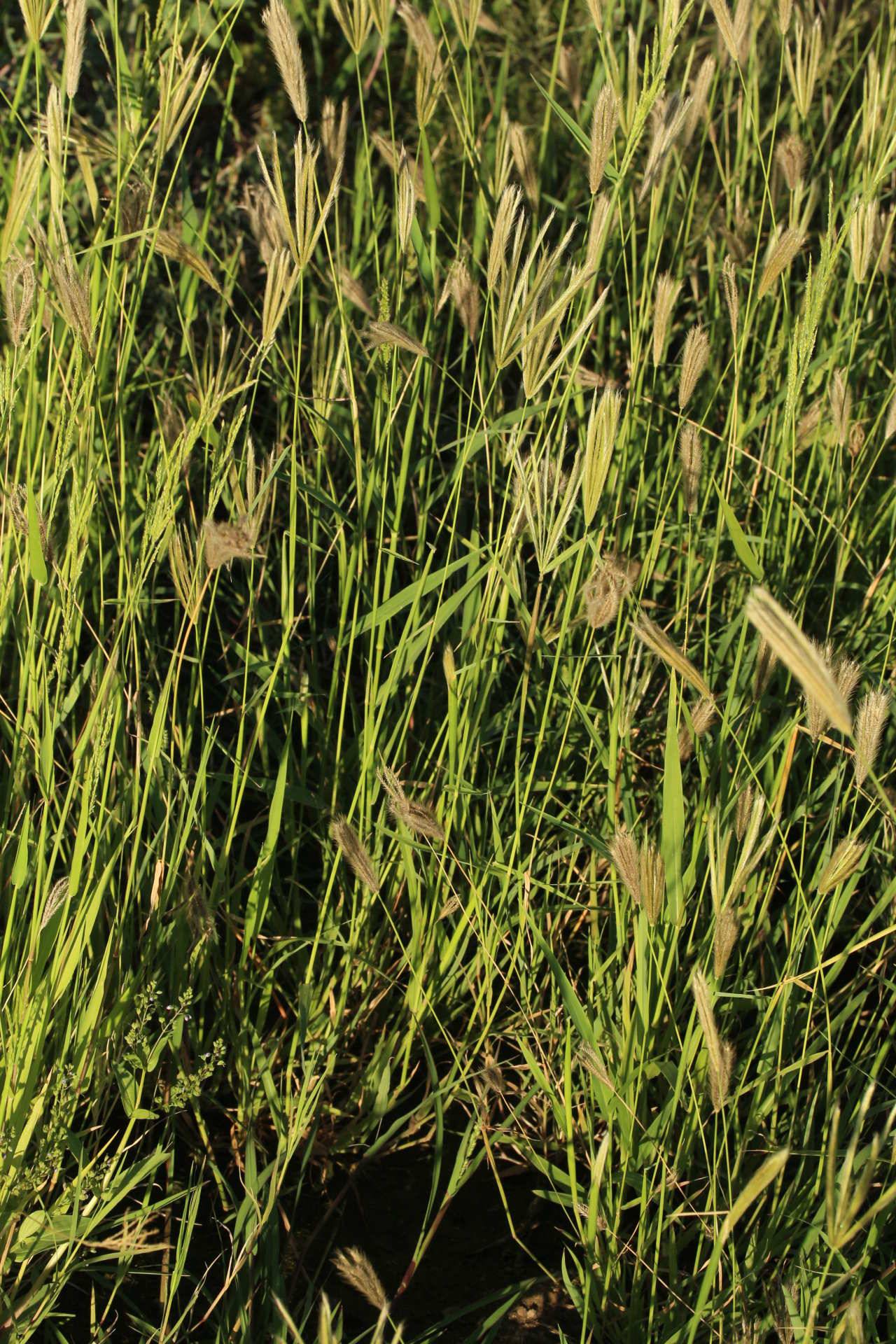
|
Family: Poaceae |
Plants annual or perennial; habit various, rhizomatous, stoloniferous, or cespitose. Culms 10-300 cm; internodes pith-filled. Sheaths strongly keeled, glabrous, scabrous, or pubescent; ligules membranous, erose to lacerate or ciliate, occasionally absent; blades, particularly those of the basal leaves, often with long, coarse hairs near the base of the adaxial surface and margins. Inflorescences terminal, panicles with (1)5-30 spikelike branches, these usually borne digitately, occasionally in 2-several whorls, sometimes with a few isolated branches below the primary whorl(s), all branches usually exceeding the upper leaves; branches with spikelets in 2 rows on 1 side of the branch axes. Spikelets solitary, sessile to pedicellate, laterally compressed, with 2-3(5) florets, usually only the lowest floret bisexual, rarely the lower 2 florets bisexual, remaining floret(s) sterile or staminate; florets laterally compressed or terete, cylindrical to obovoid, awned or unawned, sterile and staminate florets progressively reduced distally if more than 1 present; disarticulation usually beneath the lowest floret in the spikelets, all florets falling as a unit, sometimes at the uppermost cauline node, panicles falling intact. Glumes unequal, exceeded by the florets, lanceolate, acute to acuminate, usually unawned, occasionally awned, awns to 0.3 mm; calluses bearded; lemmas of bisexual florets 3-veined, marginal veins pubescent, midveins usually glabrous, sometimes scabrous, usually extending into an awn, sometimes merely mucronate, awns to 37 mm, lemma apices truncate or obtuse, entire or bilobed, lobes, when present, sometimes awn-tipped, awns to 0.6 mm; paleas shorter than the lemmas, 2-veined, veins scabrous; anthers 3; lodicules 2. Caryopses ovoid, elliptic, or obovoid. x = (9)10. Named for Chloris, the Greek goddess of flowers. Spikelets with 1 perfect fl and 1 or more empty lemmas, articulated above the glumes, sessile in 2 rows on 2 sides of a slender triangular rachis; glumes small, unequal, the first 1-veined, the second 1- or 3-veined; lemmas unequal, the lowest fertile, compressed and keeled, usually awned just below the tip, 3-veined, the lateral veins marginal; second lemma smaller, sterile, usually truncate or inflated, awned or awnless; other lemmas, if present, still smaller and mostly concealed within the second; usually tufted, bearing several elongate spikes in a terminal digitate cluster. 40, warm reg. Gleason, Henry A. & Cronquist, Arthur J. 1991. Manual of vascular plants of northeastern United States and adjacent Canada. lxxv + 910 pp. ©The New York Botanical Garden. All rights reserved. Used by permission. |
This project was made possible in part by the Institute of Museum and Library Services [MG-70-19-0057-19].
Powered by Symbiota



